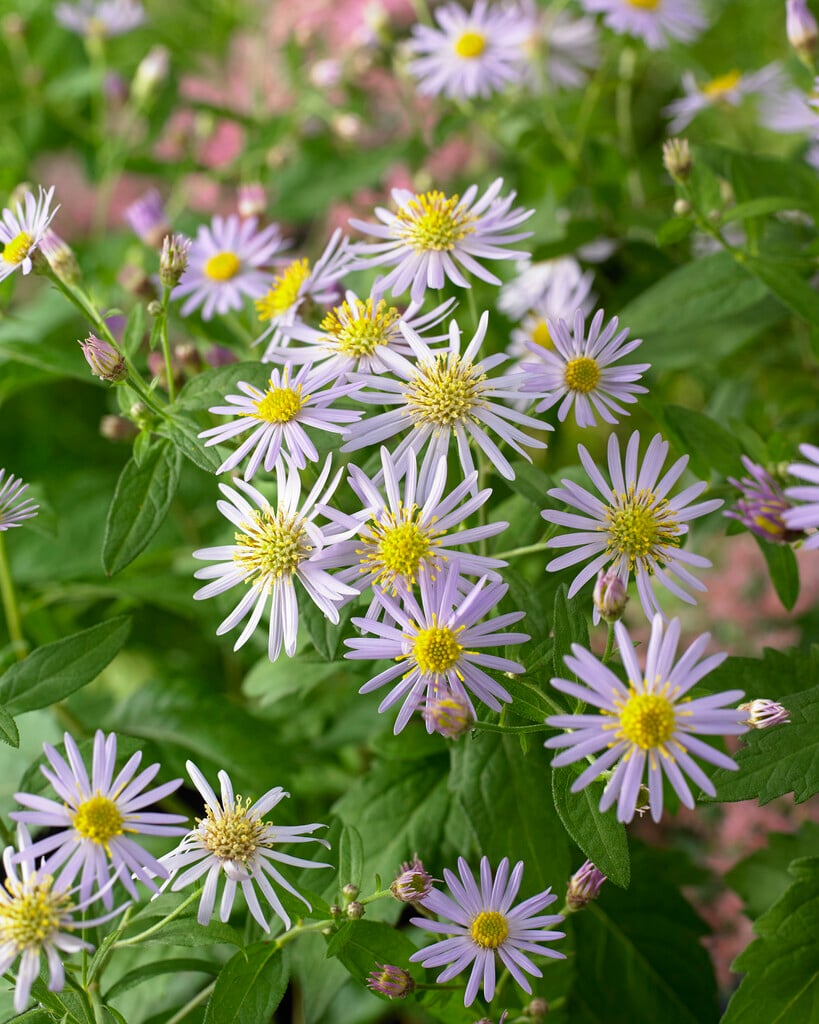Aster ageratoides 'Asran'
aster 'Asran'
Clump-forming perennial which grows to around 60cm tall and produces clusters of pale purple-blue, daisy-like flowers with yellow centres, during autumn
Synonyms
Aster trinervius subsp. ageratoides 'Asran'Aster trifoliatus subsp. ageratoides 'Pale Liliac'
see moreAster trifoliatus subsp. ageratoides 'Asran'
Size
Ultimate height
0.5–1 metresTime to ultimate height
2–5 yearsUltimate spread
0.1–0.5 metresGrowing conditions
Moisture
Moist but well–drained, Well–drainedpH
Acid, Alkaline, NeutralColour & scent
| Stem | Flower | Foliage | Fruit | |
| Spring | Green | |||
|---|---|---|---|---|
| Summer | Green | |||
| Autumn | Blue Purple Yellow | Green | ||
| Winter |
Position
- Full sun
- Partial shade
Aspect
South–facing or East–facing or West–facing
Exposure
Exposed or Sheltered Hardiness
H5Botanical details
- Family
- Asteraceae
- Native to GB / Ireland
- No
- Foliage
- Deciduous
- Habit
- Clump forming
- Genus
Aster can be perennials, annuals or subshrubs, mostly with narrow leaves, and solitary or clustered, daisy-like flowers
- Name status
Accepted
How to grow
Cultivation
Grow in well-drained, moderately fertile soil in full sun or light shade. See aster cultivation
Propagation
Propagate by division in spring or root softwood basal cuttings in spring
Suggested planting locations and garden types
- City and courtyard gardens
- Coastal
- Cottage and informal garden
- Patio and container plants
- Prairie planting
- Cut flowers
- Flower borders and beds
Pruning
Deadhead spent flowers to tidy, cut back stem close to the ground in late autumn
Pests
May be susceptible to leaf and bud eelworms, slugs and snails
Diseases
May be susceptible to Verticillium wilt, powdery mildews and grey moulds
Love gardening
Sign up to receive regular gardening tips, inspiration, offers and more
View our Privacy Policy
Get involved
The Royal Horticultural Society is the UK’s leading gardening charity. We aim to enrich everyone’s life through plants, and make the UK a greener and more beautiful place.

